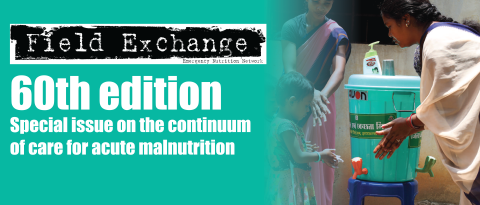The USAID experience of advocating to employ the expanded admission criteria in Nigeria
This is a poscript for the field article 'Simplified approaches to treat acute malnutrition: Insights and reflections from MSF and lessons from experiences in NE Nigeria' by Kerstin Hanson, which you can read here.
By Erin Boyd
Erin Boyd is a Nutrition Advisor at USAID’s Office of Foreign Disaster Assistance (OFDA). She has over 12 years of experience in emergency nutrition response, covering policy, programme management, monitoring and evaluation, coordination and operational research.
In northeast Nigeria in 2016 nutrition assessment reports indicated a nutrition crisis, with reports of large numbers of mothers and children arriving severely malnourished to camps. USAID did not have many emergency nutrition partners operating in northeast Nigeria and sought to support partners to rapidly scale up treatment of acute malnutrition in response to a potential famine.
Access to northeast Nigeria was very constrained and there were few partners with capacity to implement community-based management of acute malnutrition (CMAM). There was also no World Food Programme (WFP) presence in Nigeria during this time, which made moderate acute malnutrition (MAM) treatment impossible. Given the circumstances, USAID worked with non-governmental organisations (NGOs), partners and the Nutrition in Emergencies Working Group (NiEWG) to share resources1 and experiences related to the expanded admission criteria (EAC) and urged the NiEWG and NGOs to consider its application in northeast Nigeria. While the information was well received, decision-making by the emergency nutrition community, including national authorities and United Nations agencies was slow, despite the availability of funds and resources to implement this model.
USAID continues to support the use of the EAC and different modifications to national guidelines to treat acute malnutrition in specific settings. We also support operational research to test which modifications yield the most improved outcomes and are operationally feasible. USAID maintains a willingness and flexibility to modify the treatment model for acute malnutrition in certain contexts in order to reach children as early as possible in humanitarian settings.
Endnote
1Annex D of the MAM Decision Tool, which outlines the use of RUTF to treat children with moderate acute malnutrition in acute crises.


